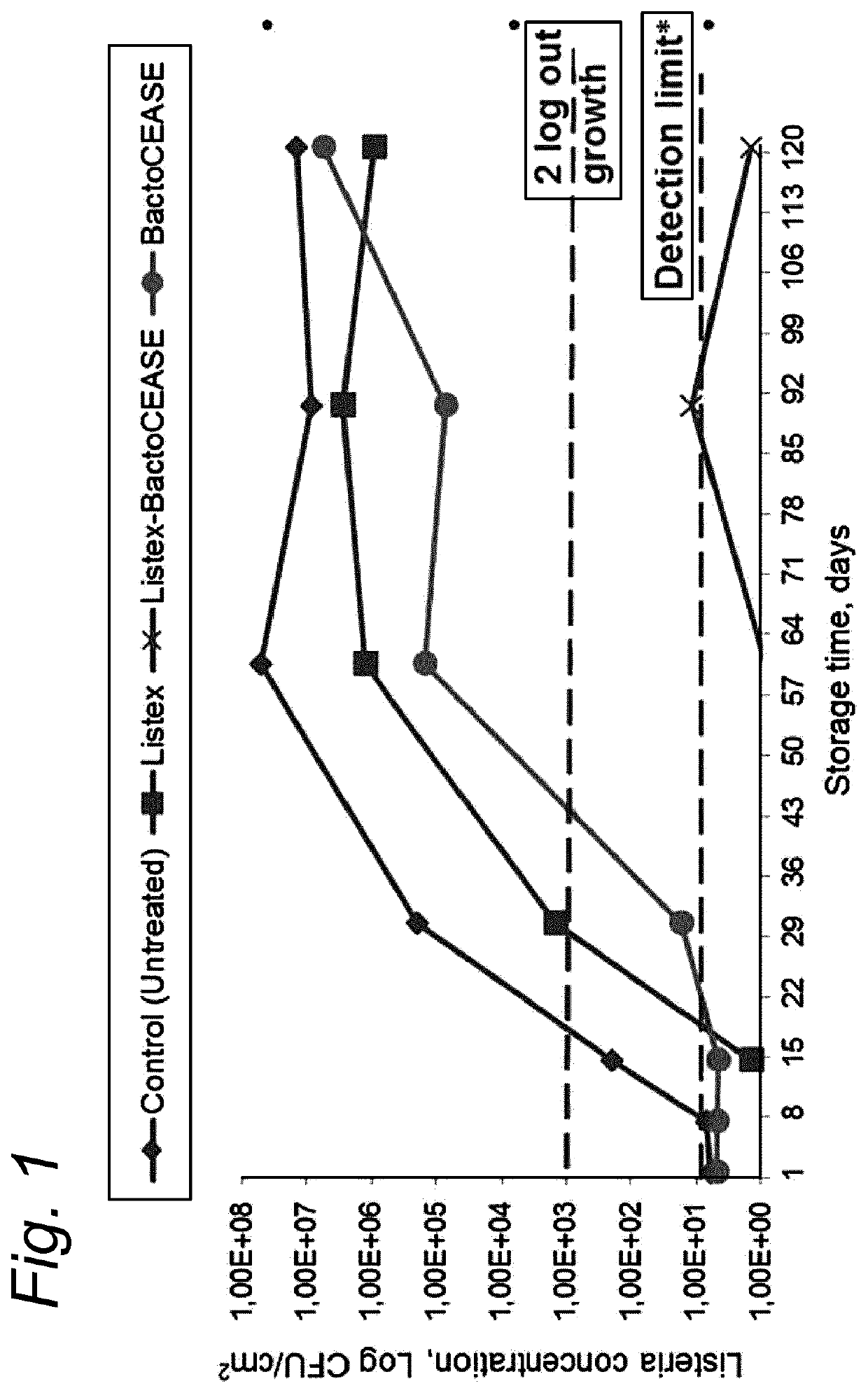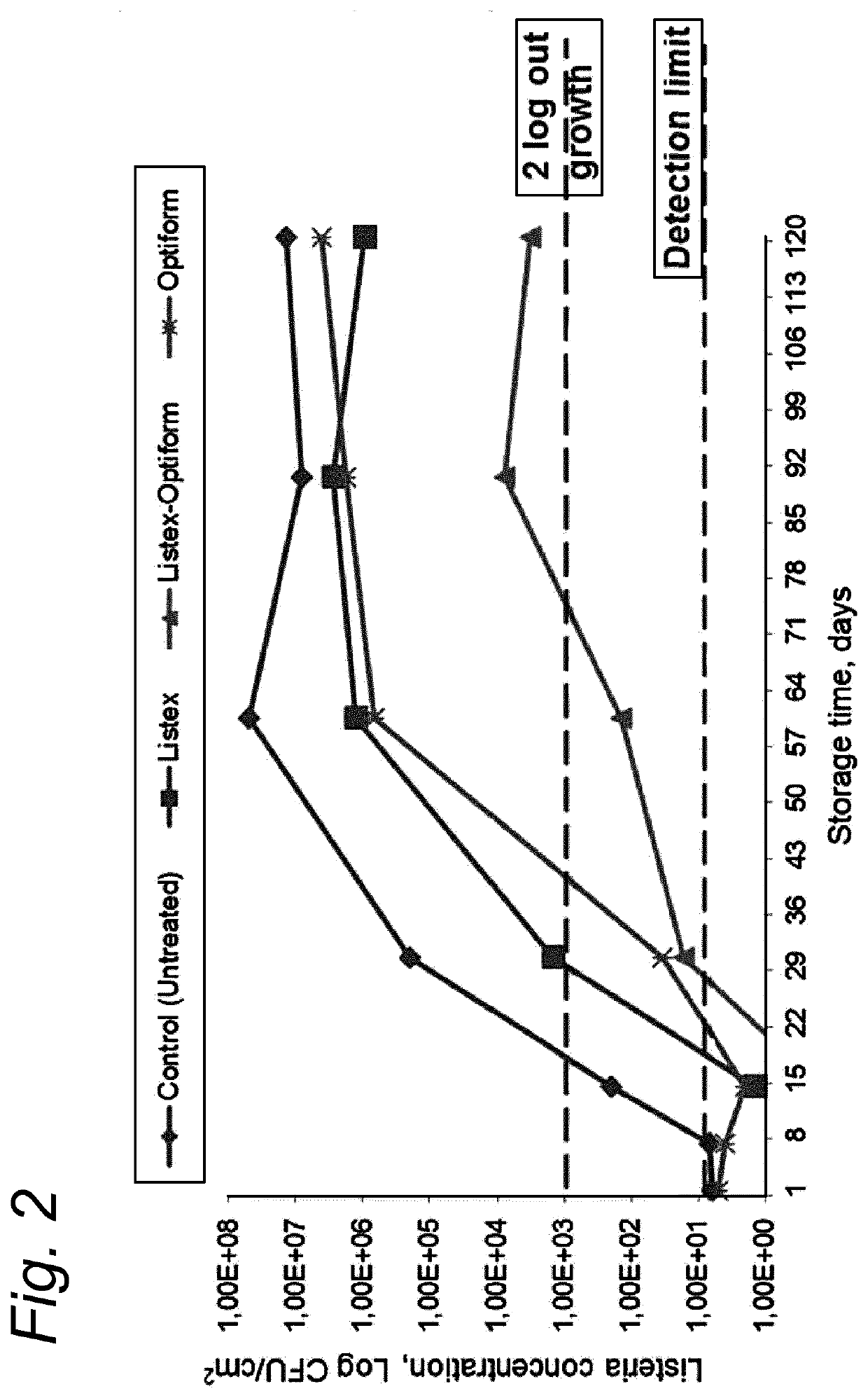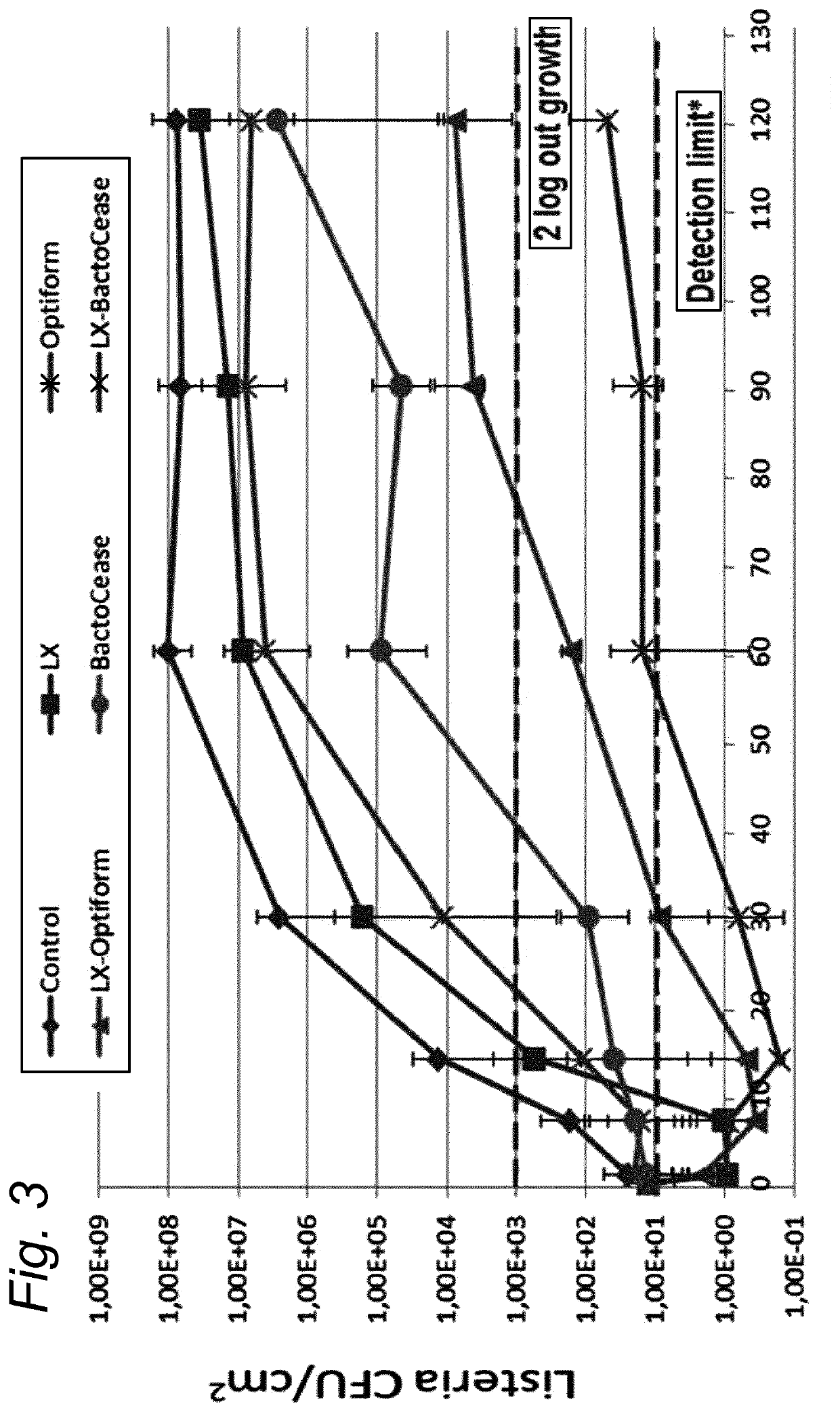Improved control of bacterial contamination in food
a technology for improving the control of bacterial contamination in food and biotechnology, which is applied in the field of biotechnology, can solve the problems of bacterial contamination being a substantial problem, the difficulty of preparing and the inability to control bacterial contamination
- Summary
- Abstract
- Description
- Claims
- Application Information
AI Technical Summary
Benefits of technology
Problems solved by technology
Method used
Image
Examples
example 1
[0043]Effect of an Anti-Listeria Monocytogenes Bacteriophage in Combination with Buffered Vinegar or Lactate / Diacetate on Listeria on Cooked Turkey when Applied on the Surface of the Food Product.
[0044]Materials and Methods
[0045]Commercially available cooked turkey was inoculated with Listeria monocytogenes at 1 Log CFU(Colony Forming Units) / cm2. A four-strain cocktail of bacteria was used: L. monocytogenes 10403S-SV 1 / 2a; EDGe-SV 1 / 2 a; WLSC1042-SV 4b and WLSC ScottA-SV4b. All strains are reference strains and are commercially available.
[0046]The surfaces of the cooked turkey was subsequently sprayed with a volume of 5 μl / cm2 of:[0047]Control: water[0048]2% PhageGuard Listex=4×109 PFU / ml=2×107 PFU / cm2. Phageguard Listex comprises bacteriophage P100 which is described previously herein.[0049]Opti.Form Plus—a commercially available solution comprising 72.8% potassium lactate, 5.2% sodium diacetate and 22 water.[0050]BactoCEASE—a commercially available solution of buffered vinegar (17...
example 2
[0063]Effect of an Anti-Listeria Monocytogenes Bacteriophage in Combination with Buffered Vinegar or Lactate / Diacetate on Listeria on Cooked Turkey when Applied on the Surface of the Food Product Experiment 2 was Repeated.
[0064]Materials and Methods
[0065]Commercially available cooked turkey was inoculated with Listeria monocytogenes at 1 Log CFU(Colony Forming Units) / cm2. A four-strain cocktail of bacteria was used: L. monocytogenes 10403S-SV 1 / 2a; EDGe-SV 1 / 2 a; WLSC1042-SV 4b and WLSC ScottA-SV4b. All strains are reference strains and are commercially available.
[0066]The surfaces of the cooked turkey was subsequently sprayed with a volume of 5 μl / cm2 of:[0067]Control: water[0068]2% PhageGuard Listex=4×109 PFU / ml=2×107 PFU / cm2. Phageguard Listex comprises bacteriophage P100 which is described previously herein.[0069]Opti.Form Plus—a commercially available solution comprising 72.8% potassium lactate, 5.2% sodium diacetate and 22 water.[0070]BactoCEASE—a commercially available soluti...
example 3
[0083]Effect of an Anti-Listeria Monocytogenes Bacteriophage in Combination with Buffered Vinegar or on Listeria on Salmon Fillet when Applied on the Surface of the Food Product
[0084]Materials and Methods
[0085]Commercially available smoked salmon fillet was inoculated with Listeria monocytogenes at 2 Log CFU(Colony Forming Units) / cm2. A four-strain cocktail of bacteria was used: L. monocytogenes 10403S-SV 1 / 2a; EDGe-SV 1 / 2 a; WLSC1042-SV 4b and WLSC ScottA-SV4b. All strains are reference strains and are commercially available.
[0086]The surfaces of the cooked turkey was subsequently sprayed with a volume of 5 μl / cm2 of:[0087]Control: water[0088]2% PhageGuard Listex=4×109 PFU / ml=2×107 PFU / cm2 (applied at 5μL / cm2)[0089]Buffered vinegar—two concentrations (8.5% and 12.5% acetate) and pick up (1.2% and 1.8%)[0090]Combination of PhageGuard Listex and buffered vinegar (total 13 μL / cm2).
[0091]Samples were vacuum packed and stored at 4 degrees Celsius for 7 days, then 7 degrees Celsius for t...
PUM
 Login to View More
Login to View More Abstract
Description
Claims
Application Information
 Login to View More
Login to View More - R&D
- Intellectual Property
- Life Sciences
- Materials
- Tech Scout
- Unparalleled Data Quality
- Higher Quality Content
- 60% Fewer Hallucinations
Browse by: Latest US Patents, China's latest patents, Technical Efficacy Thesaurus, Application Domain, Technology Topic, Popular Technical Reports.
© 2025 PatSnap. All rights reserved.Legal|Privacy policy|Modern Slavery Act Transparency Statement|Sitemap|About US| Contact US: help@patsnap.com



